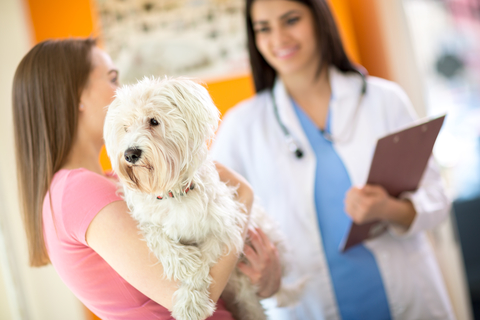 Effective communication is the foundation of a strong and trusting professional-client relationship. In fact, it may be as important as the quality of care provided by a practice. While a team can be technically gifted, if the client does not feel respected, listened to and informed about their pet’s care, it can result in unhappy clients who are less inclined to comply with the practice’s recommendations. Although effective communication may not be a panacea for all the challenges that the healthcare team and client struggle with, it can position the team for more productive encounters with clients.
Effective communication is the foundation of a strong and trusting professional-client relationship. In fact, it may be as important as the quality of care provided by a practice. While a team can be technically gifted, if the client does not feel respected, listened to and informed about their pet’s care, it can result in unhappy clients who are less inclined to comply with the practice’s recommendations. Although effective communication may not be a panacea for all the challenges that the healthcare team and client struggle with, it can position the team for more productive encounters with clients.
Consultants in the area of improving communication in the healthcare setting identify these issues as ones that should be considered when evaluating or developing a practice communication strategy.
Focus on empowering the client: The relationship between healthcare staff and client is one of imbalance---the healthcare team has the medical expertise and the client is the pet parent. Communications that take place in the healthcare setting should always involve give and take. The healthcare team should make every effort to invite the client into the conversation and listen to the insights and information provided.
Manage client expectations: An integral component of communicating effectively is managing expectations. Clients whose pets receive a clean bill of health and an appointment to return in a year should have a clear understanding that they have an impact on their pet’s health and complying with preventive care protocols is the best way to ensure their furry friend remains healthy and happy. Should the client’s compliance become lax, they cannot realistically expect that the pet’s good health is guaranteed.
Make it a point to make the team a font of information: Thanks to the internet, information is everywhere. What you don’t know or didn’t hear correctly can be googled. The healthcare team can minimize confusion if they are clear about what is occurring during the visit, repeating and rephrasing information and giving the client an opportunity to ask clarifying questions. The goal is to set up a protocol for dispensing information so that when the visit is over, the client does not have to search other sources for information.
Because professionals---regardless of their areas of expertise---have a tendency to overestimate their ability to communicate effectively, tools that offer an unbiased representation of the effectiveness of the communication that occurs during the office visit are helpful. The Opportunity---the online survey tool from Partners for Healthy Pets (PHP) is one such tool. The Opportunity tool helps uncover communication disparities between what the healthcare team says and what the client hears. The site also provides scripts, videos and other supporting materials useful when creating your communication plan.
#ChampionsCorner